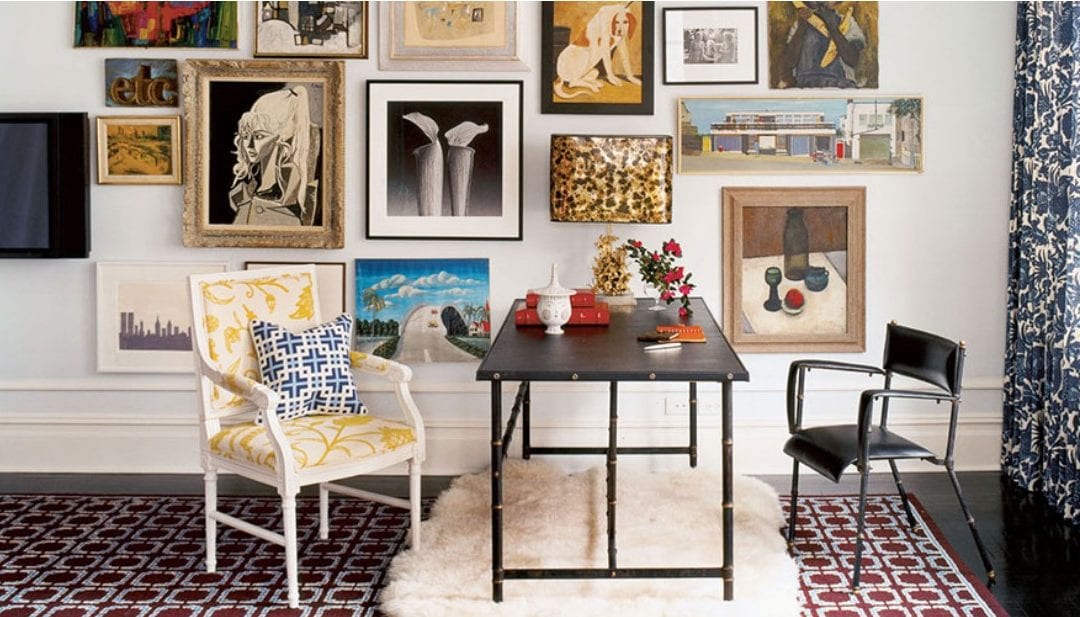Adding art to your flip is a great way to add style and excitement – that’s if you choose the right pieces. Displaying art that is too large or intense can easily distract buyers from why they are there in the first place. Which is to picture themselves living in the home. It’s all too common that stagers assume buyers share their same taste in art or use the same pieces in every property they stage with little thought of what looks good in the buyer’s mind.
Don’t let a piece of art take away from that hard work you put into your fix and flip. Avoid the 6 common mistakes below that investors and stagers often make when adding artwork to a completed flip.
Sculptures
Placing an overly large or confusing sculpture in your flip draws attention away from the space you’re trying to emphasize. The trick is to subtly place a sculpture in an area to draw attention to the space around it. You’ll know it’s overdone when a sculpture leaves a bigger impression than the space it’s in.
Keep the focus on your property by avoiding sculptures with any of these qualities:
- Have nudity
- Too modern or abstract
- Too big, making the room feel small
- Blocks views
Paintings and Prints
Over-the-top paintings or intense graphics can be an easy turn-off for a buyer. Avoid choosing pieces that contrast with the colors in the furniture, walls, and carpet.
Selecting the right size art can be an art in and of itself. Select your art based on the size of the room. If the room is large and spacious, then choosing a larger painting would be appropriate.
Before your open house, do a quick run-through of your flip to check your stager’s work. Even if they chose a beautiful, neutral painting that makes the room pop, it can still draw energy out of the room if the placement is off. When putting up artwork, place it at eye height. Resist the temptation to place art on higher walls because that makes the ceilings seem lower.
Artwork Lighting
Although lighting can highlight a phenomenal piece of art, if you bring too much attention to the piece it can take away from the features of the room. Some stagers love to work with artists that will lend them multiple pieces and lighting but don’t let them. Your flip isn’t a gallery exhibition; this is staging to sell your investment property.
If you do choose to illuminate the art in your flip, avoid any type of lighting that involves installation. Track lights and ceiling-mounted accent lights, may enhance or liven up a piece of art but they will leave holes in the drywall when removed. Buyers’ eyes will go to the bulky lighting structure and their heads instantly go from enjoying the space to how they’re going to get that down.
For a more casual way of illuminating art, go with a wall washer like this one that sits on the floor. It’ll deliver a wide distribution of light and can be easily removed and stowed away.
Personal Artwork
Always avoid using photos of you, your family, and pets. Being surrounded by personal pictures and artwork can make buyer’s feel out-of-place. It’s never good when a buyer has a difficult time visualizing their future lives in your flip. If there are any kid’s drawings posted on the fridge or throughout the home, be sure to temporarily take these down.
Political Artwork
Politics are ever-present in the DC area. However, political displays in and around your house can lead buyers to make assumptions about the neighborhood, sometimes negative ones.
Refusal to remove any political displays could result in more days on market and lower offers. To be safe, remove all political signage and displays from the property to make your property a neutral, bipartisan space.
Chandeliers
Chandeliers uplift the style of any place, but if you’re not careful, it can easily overtake the room. A chandelier too large or small, or awkwardly placed can throw the whole room off. Any chandelier you install in your flip should be the right fit for the room and match the taste of the local market.
The same thing goes for the height of the chandelier. Nothing’s worse than bumping your head into a chandelier that’s hanging too low or a fixture over a dining table that doesn’t allow enough space for flowers or a centerpiece. Measure the amount of space you’ll need between the bottom of the fixture and the floor to make sure it’s a right fit for the room.
Investors can also shoot themselves in the foot by installing a chandelier in a location that buyers may not want one. In the DC area, buyers of row houses doing condo conversion may forgo a formal dining table in order to save floor space. A way to help mitigate this risk is to run the electrical wiring to a designated spot, but simply cap off the mount for a fixture in the ceiling. This allows buyers to leave the space open for now, while allowing the option for a lighting fixture in the future. When it comes to smaller spaces, less is more.

